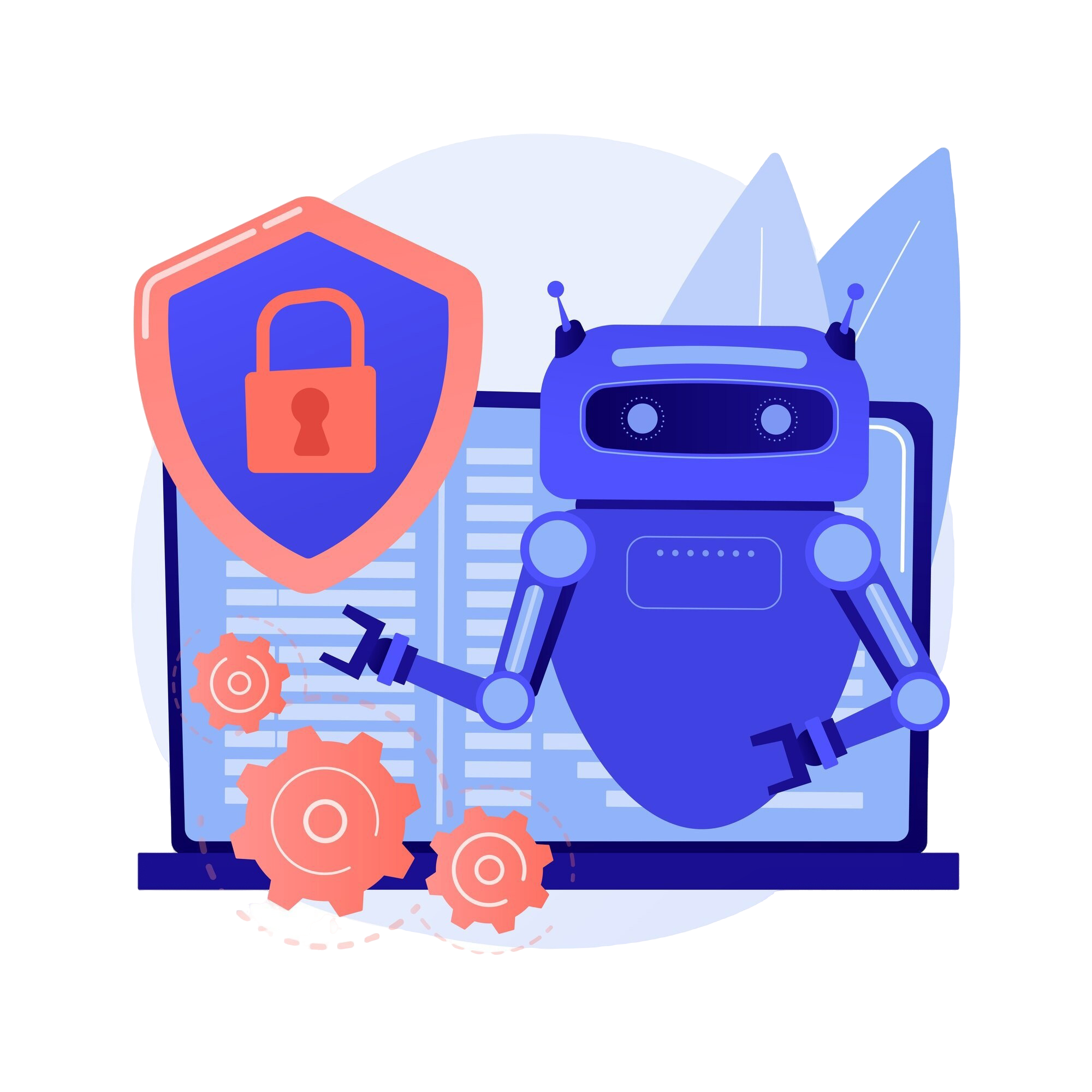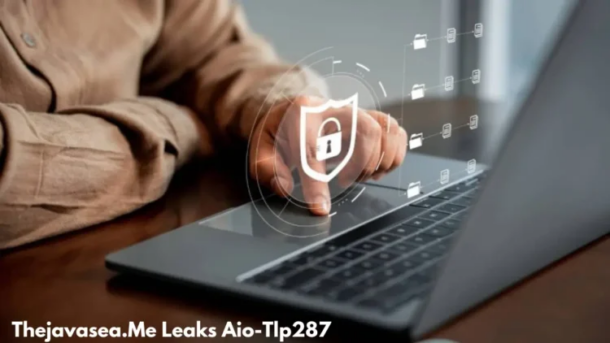Other
Cybersecurity Threats: Identifying and Mitigating Vulnerabilities

The digital realm is evolving rapidly, unveiling innovative advancements that reshape how we live and work. However, this growth also introduces sophisticated cybersecurity threats lurking in the background, awaiting opportunities to compromise systems. A robust understanding of these threats, efficiently identifying vulnerabilities, and proactive management can significantly curb potential damages. Explore Fortinet CVEs on CVEDetails.com for more insights. This repository is vital for identifying potential security vulnerabilities associated with different technologies, which is crucial for building a more secure digital infrastructure.
Awareness and preparedness are crucial in an era where data breaches and cyber attacks have become ominously commonplace. By delving into the dynamics of cybersecurity, individuals and organizations can arm themselves against the digital adversaries that jeopardize digital integrity. The global transition to digital platforms, exacerbated by social, economic, and professional shifts, underscores the need for robust cybersecurity frameworks that protect against sophisticated and often underreported threats.
Introduction to Cybersecurity Threats
The rapid growth of technology has undoubtedly transformed societies, but with these advancements come new perils. Cybersecurity threats manifest in many forms, from small-scale phishing scams to vast ransomware attacks that can damage entire networks. Cyber adversaries employ increasingly complex tactics to exploit vulnerabilities ranging from unpatched software to human error. Knowledge and vigilance are empowering tools that help combat these invisible dangers. Staying updated on the latest patterns and methodologies cybercriminals use is just as essential as understanding the basic principles of personal and organizational cybersecurity.
Importance of Vulnerability Management
Vulnerability management transcends mere technical undertakings; it is a critical component of strategic security planning. Whether within personal domains or expansive organizations, maintaining an attentive approach to vulnerabilities is pivotal in staving off breaches and protecting valuable assets. Effective vulnerability management involves identifying, evaluating, treating, and reporting security vulnerabilities within systems and the software running on them. This cycle ensures immediate risks are addressed while long-term solutions are developed to mitigate future vulnerabilities. Organizations can minimize their risk exposure by adopting a comprehensive and continuous strategy, which is crucial in today’s rapidly evolving threat landscape.
Common Cybersecurity Threats Today
In the contemporary digital landscape, threats are as adaptive as they are varied. Cybersecurity Insights highlights how commonplace issues like phishing, malware, and ransomware demand meticulous attention. Staying one step ahead of these threats involves understanding their nature and the contexts in which they operate. Phishing attacks often aim at tricking individuals into divulging sensitive information by appearing as trustworthy communications. Meanwhile, ransomware can lock users out of their systems, demanding payment to restore access. Knowledge of these tactics, coupled with understanding more obscure threats like zero-day exploits and Advanced Persistent Threats (APTs), is essential for effective defense.
Strategies to Identify Vulnerabilities
Identifying vulnerabilities effectively relies on a mix of automated technological tools and expert human judgment. Understanding intricate network architectures and performing regular in-depth assessments are pivotal in uncovering latent weaknesses that cybercriminals could exploit. Vulnerability scanning tools are instrumental in continuously analyzing systems and networks for known vulnerabilities, while pen tests simulate cyber attacks to assess system resilience. Complementing technological tools with human expertise provides a comprehensive perspective on security gaps, enabling more nuanced and informed vulnerability management strategies that adapt to different digital environments’ unique requirements and evolution.
Practical Steps for Threat Management
Combatting cybersecurity threats involves implementing a well-rounded strategy. Initiating simple steps like updating antivirus software regularly can go a long way. Moreover, advanced measures like encryption technology and regular penetration testing can reinforce assurance against potential cyber threats. Conducting security awareness training for employees is another significant step in threat management. Since the human element is frequently the most vulnerable aspect of cybersecurity, educating individuals significantly mitigates the likelihood of effective social engineering attacks. Multi-factor authentication creates an additional security barrier, safeguarding against unauthorized entry, even if login information is breached.
Role of Continuous Monitoring
A cornerstone of effective cybersecurity management is continuous monitoring. This proactive strategy facilitates the rapid detection of irregularities, allowing organizations to react promptly and effectively to reduce the effects of possible digital threats. Constant network monitoring ensures that any unusual activity is swiftly investigated, reducing the window of opportunity for potential intruders.
Leveraging Technology for Threat Detection
AI capabilities can significantly bolster the accuracy and speed of identifying threats, ensuring that security measures remain one step ahead of evolving risks. ML algorithms can detect patterns that indicate malicious behavior, providing real-time alerts to potential threats. Moreover, AI’s predictive capabilities allow for the anticipation of new threats, allowing organizations to reinforce their defenses before an attack occurs, making AI an indispensable tool in modern cybersecurity infrastructures.
Staying Informed: Resources and Community Involvement
Staying informed is quintessential in the ever-changing landscape of cybersecurity. Engaging with cybersecurity publications and participating in online forums can facilitate knowledge sharing. Such involvement also equips individuals and organizations with the latest strategies to safeguard against emerging threats, fostering a safer digital environment. Being part of communities like the Information Systems Security Association (ISSA) allows professionals to share insights and experiences, enhancing collective cybersecurity postures. Subscribing to updates from credible cybersecurity blogs and organizations ensures that individuals are always aware of potential new threats and global trends, sustaining effective and proactive cybersecurity measures.
Other
A Complete Guide to Lone Worker Protection: Policies, Technology, and Best Practices

In today’s dynamic work environment, ensuring the safety of lone workers is not just a regulatory requirement but a moral imperative. This guide explores comprehensive strategies to protect lone workers, detailing effective policies, cutting-edge technology, and best practices that every organization can adopt to create a safer workplace.
The Importance of Lone Worker Protection
Lone workers, whether in remote locations or isolated parts of larger facilities, face unique risks. Without immediate supervision or assistance, these employees may be more vulnerable during emergencies. Implementing robust protection measures ensures that help can reach them promptly, reducing the likelihood of severe injuries or prolonged downtime.
Essential Policies for Lone Worker Safety
Risk Assessment and Management
Developing a thorough risk assessment process is the first step toward safeguarding lone workers. Employers should:
- Identify potential hazards: Consider both environmental risks and job-specific dangers.
- Establish clear protocols: Outline what actions to take in case of an emergency, including communication methods and emergency contacts.
- Regularly review and update policies: Ensure that safety measures keep pace with evolving work environments and emerging risks.
Communication and Training
Effective communication is key to ensuring the safety of lone workers. Organizations should:
- Implement regular check-ins: Use scheduled calls or automated systems to monitor worker status.
- Provide comprehensive training: Equip employees with the knowledge to handle emergencies, use safety equipment, and report incidents.
- Develop contingency plans: Ensure that workers know how to act if they lose communication or encounter unexpected hazards.
Leveraging Technology for Enhanced Safety
Innovative Safety Devices
Recent technological advancements have introduced a range of devices designed to monitor and safeguard lone workers. These include:
- Man down alarms: Devices that detect falls or sudden inactivity, triggering immediate alerts.
- Wearable safety technology: Gadgets equipped with GPS and real-time monitoring capabilities to track location and vital signs.
- Mobile apps: Solutions that allow workers to quickly notify supervisors or emergency services in case of distress.
Integrating Systems for Comprehensive Coverage
By integrating various safety tools into a single system, employers can streamline their response processes and enhance overall protection. This integration facilitates:
- Real-time monitoring: Continuous tracking of worker locations and conditions.
- Immediate alert systems: Automated notifications to designated contacts or emergency services.
- Data-driven insights: Analysis of safety incidents to refine protocols and prevent future occurrences.
Best Practices for Implementing Lone Worker Protection
Foster a Culture of Safety
Creating an environment where safety is prioritized starts at the top. Leaders should:
- Demonstrate commitment: Allocate resources and time to safety training and equipment.
- Encourage open communication: Allow workers to report hazards or near-misses without fear of reprisal.
- Continuously improve: Use feedback and incident data to enhance safety measures regularly.
Collaboration and Continuous Improvement
Effective lone worker protection requires collaboration across departments. Employers should:
- Engage with experts: Consult safety professionals to design and implement effective policies.
- Leverage employee insights: Encourage lone workers to share their experiences and suggest improvements.
- Monitor industry trends: Stay updated on new technologies and best practices to continually enhance protection measures.
For additional insights and resources on enhancing workplace safety, explore lone worker protection options available from industry experts.
Conclusion
Protecting lone workers is an ongoing commitment that involves a mix of sound policies, advanced technology, and best practices. By investing in comprehensive safety measures, organizations not only comply with regulations but also build a resilient workforce ready to tackle the challenges of modern work environments. Prioritizing lone worker protection ultimately leads to safer, more productive workplaces and a stronger commitment to employee well-being.
Other
Downloading and Installing FikFap APK: Step by Step Guide

FikFap APK is a popular entertainment platform offering users access to a wide range of exclusive content. Due to its availability as a third-party application, users must download and install it from external sources. This guide provides detailed instructions on how to safely download and install FikFap APK while ensuring device security.
What is FikFap App?

FFikFap is a third-party video-sharing application that offers exclusive and often adult-oriented content. It is similar to platforms like TikTok but focuses on more unrestricted content that may not be available on mainstream social media apps. Since it is not available on official app stores like Google Play or the Apple App Store, users need to download and install the APK file from external sources.
Key Features of FikFap APK

- User-Friendly Interface – Easy navigation and smooth functionality.
- Exclusive Content – Access to unique videos not found on mainstream platforms.
- Offline Viewing – Download videos and watch them without an internet connection.
- Ad-Free Experience – Enjoy uninterrupted entertainment without annoying ads.
- High-Quality Streaming – Fast and smooth playback options.
- Customization Features – Personalize content recommendations.
- Security Measures – Advanced features to protect user data and privacy.
Safety Considerations
When downloading FikFap APK, it’s essential to take precautions to protect your device and personal data. Here are some important safety measures:
- Download from Verified Sources – Only use trusted websites to avoid malware.
- Use Antivirus Software – Scan the downloaded APK file for potential threats.
- Enable Security Settings – Configure your device to block harmful installations.
- Avoid Suspicious Pop-ups – Do not click on misleading ads during the download process.
- Regular Updates – Keep the app updated to ensure the latest security patches are applied.
Step-by-Step Guide to Downloading and Installing FikFap APK on Android Devices
Enabling Unknown Sources
- Go to your Device Settings.
- Navigate to Security or Privacy Settings.
- Enable Unknown Sources to allow installation from third-party sources.
Downloading the APK File
- Open a trusted browser and search for FikFap APK latest version.
- Select a reliable website to download the file.
- Click on the download link and wait for the file to be saved on your device.
Installing the APK File
- Locate the downloaded FikFap APK file in your device’s storage.
- Tap on the file to initiate the installation process.
- Follow the on-screen prompts and grant necessary permissions.
- Complete the installation and open the app to start using it.
Downloading and Installing FikFap APK on PC
Since FikFap APK is designed for Android, installing it on a PC requires an emulator.
Using an Android Emulator
- Download and install an Android Emulator like BlueStacks or NoxPlayer.
- Open the emulator and set up your Google account.
Installing FikFap APK via Emulator
- Download the FikFap APK file on your PC.
- Drag and drop the file into the emulator.
- Follow the installation instructions within the emulator.
- Launch the app and explore its features.
Navigating and Using FikFap APK
Account Registration
- Users can sign up using their email or social media accounts.
Exploring Content
- Browse various categories and genres.
- Use the search and recommendation features for personalized content.
Interacting with Content
- Like, comment, and share videos.
- Download videos for offline viewing.
Customization and Settings
- Adjust content preferences and notification settings.
- Manage account security and privacy settings.
Conclusion
FikFap APK provides a unique entertainment experience with exclusive content and customizable features. However, downloading third-party applications comes with risks. By following the safety measures outlined in this guide, users can securely download and install FikFap APK while safeguarding their devices. Always stay updated and download from reputable sources to enjoy a seamless and secure experience.
Other
Thejavasea.me Leaks AIO-TLP287: Everything You Need to Know

Thejavasea.me Leaks AIO-TLP287 has emerged as a significant player in the digital underground, operating as a sophisticated platform that specializes in hosting and distributing leaked content. The platform employs advanced technical infrastructure including distributed hosting networks, encrypted communication channels, and robust content delivery systems that enable it to maintain operations despite various attempts at restriction.
The platform’s architecture is designed for resilience, utilizing multiple redundant servers and peer-to-peer sharing mechanisms. This sophisticated setup allows it to maintain high availability while protecting against potential takedown attempts. The site has become notorious for its ability to quickly disseminate large volumes of leaked data while maintaining relative anonymity for its operators.
Understanding Thejavasea.me Leaks AIO-TLP287

The Thejavasea.me Leaks AIO-TLP287 represents one of the most comprehensive data breaches in recent cybersecurity history. This massive data dump encompasses a wide range of sensitive information across multiple sectors and organizations, making it particularly significant in terms of both scope and potential impact. The leaked content includes extensive databases of personal information, corporate financial records, internal communication logs, proprietary technological information, and employee data from multiple organizations.
The significance of this leak lies not only in its volume but also in the sensitivity of the exposed information. The breach has revealed vulnerabilities in multiple corporate security systems and highlighted the sophisticated nature of modern cyber threats. Within the compromised data, investigators have discovered detailed financial transactions, proprietary algorithms, customer databases, and internal strategic documents that were never intended for public access.
The Impact of Thejavasea.me Leaks AIO-TLP287 on Individuals
The ramifications of the AIO-TLP287 leak for individuals are far-reaching and potentially devastating. At the most immediate level, affected individuals face serious risks of identity theft through exposed personal identification details and financial fraud through leaked payment information. Unauthorized access to personal accounts has become a pressing concern, while targeted phishing attacks using the leaked personal data have increased significantly.
The long-term consequences for individuals are equally serious. Many face potential damage to their personal and professional relationships due to exposed private communications. The ongoing vulnerability to social engineering attacks presents a persistent threat, while the potential for blackmail or extortion looms large for those whose sensitive information was exposed. Many individuals now face the daunting task of rebuilding their digital security and managing a compromised digital footprint that requires extensive remediation.
Privacy concerns extend beyond immediate security threats. The exposure of sensitive personal communications has left many individuals vulnerable to personal and professional complications. The release of private medical or financial records has created enduring privacy concerns, while the compromise of personal security measures has left many feeling perpetually exposed. Perhaps most significantly, individuals have lost control over their personal information, creating a sense of vulnerability that may persist for years to come.
The Effect of AIO-TLP287 on Businesses and Organizations
Organizations affected by the AIO-TLP287 leak face substantial challenges that extend far beyond immediate security concerns. The financial impact has been particularly severe, encompassing direct costs of security incident response, necessary investments in enhanced security measures, mounting legal fees, and potential regulatory fines. Many organizations have also experienced significant loss of revenue due to reputational damage.
Operational disruption has proved equally challenging. Organizations have faced system downtime during security investigations, requiring substantial resource allocation to breach response efforts. The implementation of new security protocols has demanded significant time and resources, while employee training and awareness programs have required additional investment and organizational focus.
The long-term business consequences continue to unfold. Customer relationships and trust have been severely damaged, leading to lost business opportunities and decreased market confidence. Many organizations have lost competitive advantage through the exposure of proprietary information. Increased scrutiny from regulators has created additional compliance burdens, while higher insurance premiums and security costs have impacted bottom-line performance.
Legal and Ethical Considerations
From a legal perspective, the leak raises serious concerns across multiple jurisdictions. Violations of data protection regulations, including GDPR and CCPA, have exposed organizations to substantial regulatory penalties. Many companies face breach of contractual obligations regarding data security, while the potential for criminal liability related to data theft and distribution remains a serious concern. The risk of civil litigation from affected parties has created additional legal exposure.
The ethical implications of the breach are equally complex. Organizations must balance transparency requirements with privacy obligations, while corporate responsibility in data protection has come under increased scrutiny. The ethical considerations in breach reporting have challenged many organizations, while the moral implications of accessing and using leaked information have raised difficult questions for individuals and organizations alike.
Preventative Measures and Best Practices
Individual protection strategies have become increasingly important in the wake of the breach. Effective security measures include implementing robust password management systems and enabling multi-factor authentication across all accounts. Regular monitoring of financial and personal accounts has become essential, while maintaining updated security software and practicing cautious information sharing serve as critical protective measures.
Organizations must implement comprehensive security protocols to prevent similar breaches. Regular security audits and assessments provide essential insight into potential vulnerabilities. Comprehensive employee cybersecurity training helps build organizational resilience, while incident response planning ensures preparedness for future threats. Data encryption, access controls, and vendor security management round out essential security measures.
Conclusion
The AIO-TLP287 leak serves as a critical reminder of the evolving nature of cyber threats and the importance of robust security measures. This incident demonstrates the pressing need for enhanced cybersecurity protocols across all sectors, improved individual awareness of digital security, stronger regulatory frameworks for data protection, and better coordination between security stakeholders.
As we continue to navigate an increasingly digital world, the lessons learned from the AIO-TLP287 leak must inform future security practices and data protection strategies. The incident underscores the critical importance of proactive security measures and the need for constant vigilance in protecting sensitive information. Only through comprehensive security measures and ongoing attention to evolving threats can organizations and individuals hope to protect themselves against similar breaches in the future.
-

 Guides5 years ago
Guides5 years ago6 Proven Ways to Get more Instagram Likes on your Business Account
-

 Mainstream6 years ago
Mainstream6 years agoHow to Buy Property & Safe Houses in GTA 5 (Grand Theft Auto 5)
-

 Mainstream10 years ago
Mainstream10 years agoBioWare: Mass Effect 4 to Benefit From Dropping Last-Gen, Will Not Share Template With Dragon Age: Inquisition
-

 Casual1 year ago
Casual1 year ago8 Ways to Fix Over-Extrusion and Under-Extrusion in 3D Printing
-

 Mainstream12 years ago
Mainstream12 years agoGuild Wars 2: The eSports Dream and the sPvP Tragedy
-

 Uncategorized4 years ago
Uncategorized4 years agoTips To Compose a Technical Essay
-

 Guides1 year ago
Guides1 year agoExplore 15 Most Popular Poki Games
-

 iOS Games2 years ago
iOS Games2 years agoThe Benefits of Mobile Apps for Gaming: How They Enhance the Gaming Experience
